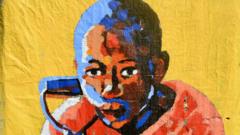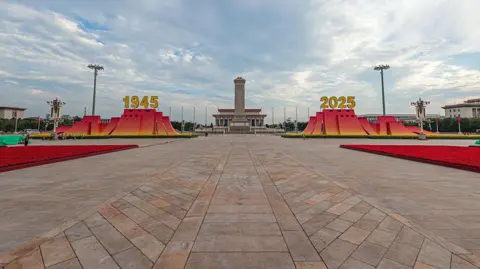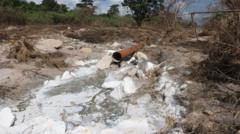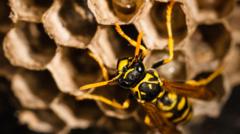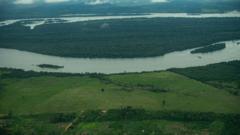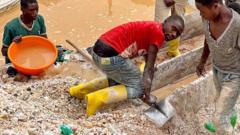Artist Stary Mwaba has brought the history of Zambia's mining industry to the forefront by exploring the lives affected by the nation’s notorious "black mountains"—massive piles of mining waste that dominate the Copperbelt skyline. Growing up near these hazardous heaps, Mwaba recalls how as children they were drawn to the abundant wild fruits there, despite knowing the dangers. “We called it ‘mu danger’—a place where you shouldn’t go,” he shares, referring to the memories that have now shaped his artistic journey.
Today, young men are drawn to these toxic remnants not for fruit, but for the fragments of copper ore hidden within. The lucrative, albeit perilous, illegal mining conducted under the guidance of gang masters—dubbed “jerabos” for their supposed criminal ties—often offers the only means of survival in a region plagued by 45% youth unemployment.
This month, Mwaba’s latest exhibition at the Lusaka National Museum recounts the stories of these miners, particularly those from Kitwe’s Wusakile neighborhood. His artworks, created on a foundation of old newspapers, use fire and paint to juxtapose “grand narratives” with the personal stories of local individuals. “I aim to show that these little narratives also matter,” he states, emphasizing the significance of ordinary lives within the larger socio-economic context.
Each striking portrait is a reflection of deep personal connections; from young men preparing safety ropes for mining tunnels to children swinging from repurposed electrical cables. Through his workshops, Mwaba has gathered heartfelt stories of hardship amid the stark realities of the mining industry.
His upbringing in a mining family influences his work. Having witnessed first-hand the transition from active mining jobs to rampant poverty after the 1990s privatization, Mwaba’s art illuminates the emotional plight of his community. His painting titled “Boss for a Day” captures the dreams and frustrations of the young miners, who often find themselves in exploitative conditions, with little control over their futures.
At the heart of Mwaba's collection lies the poignant message that art can illuminate societal issues and inspire change, as he recalls moments where his workshops have opened doors for participants seeking alternatives to the dangerous life of a jerabo. As Zambia navigates the challenges stemming from its rich mineral resources, Mwaba’s work serves as a compelling narrative that merges art with advocacy, inviting broader conversations about environmental and social justice within the realm of mining.

